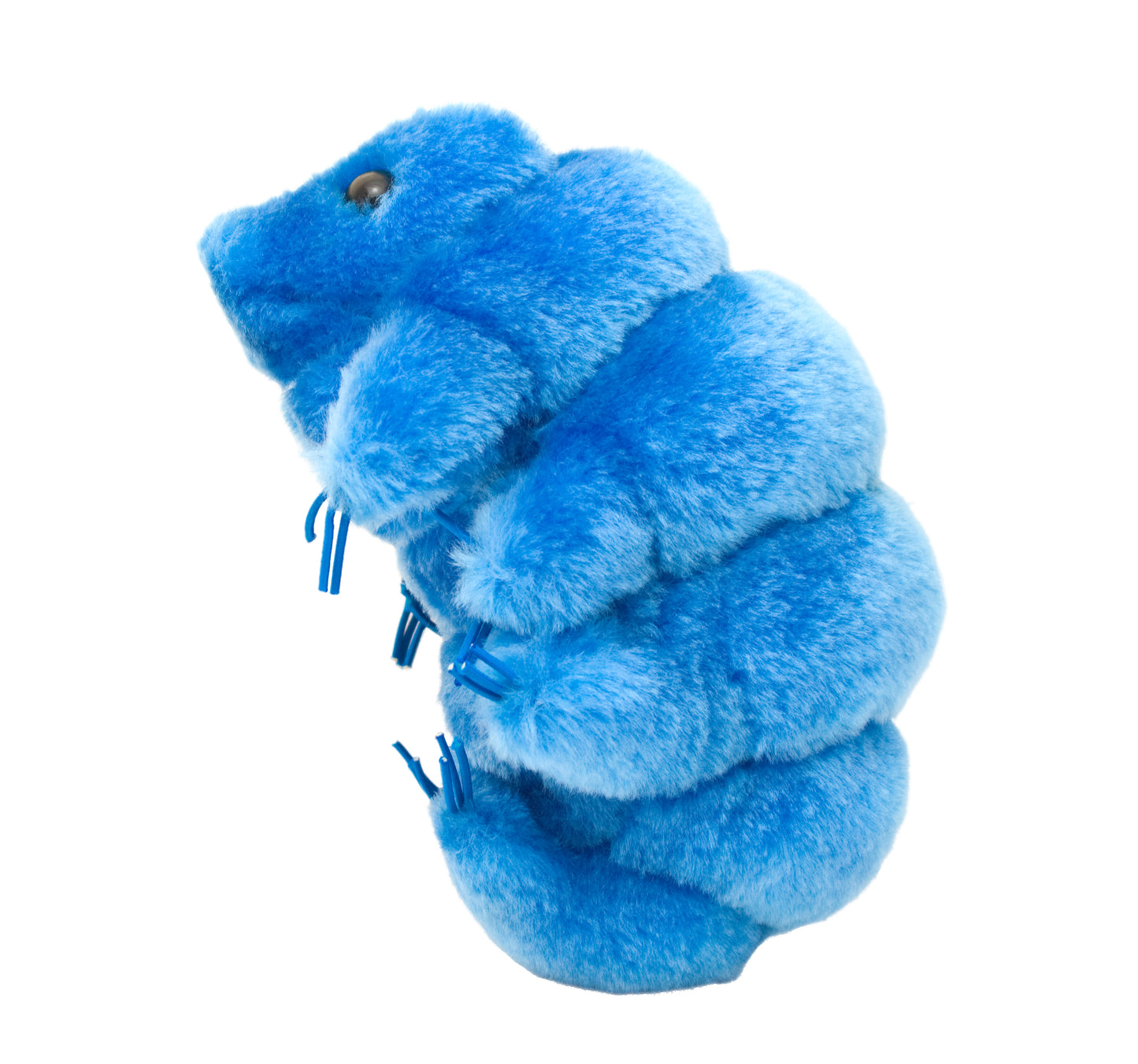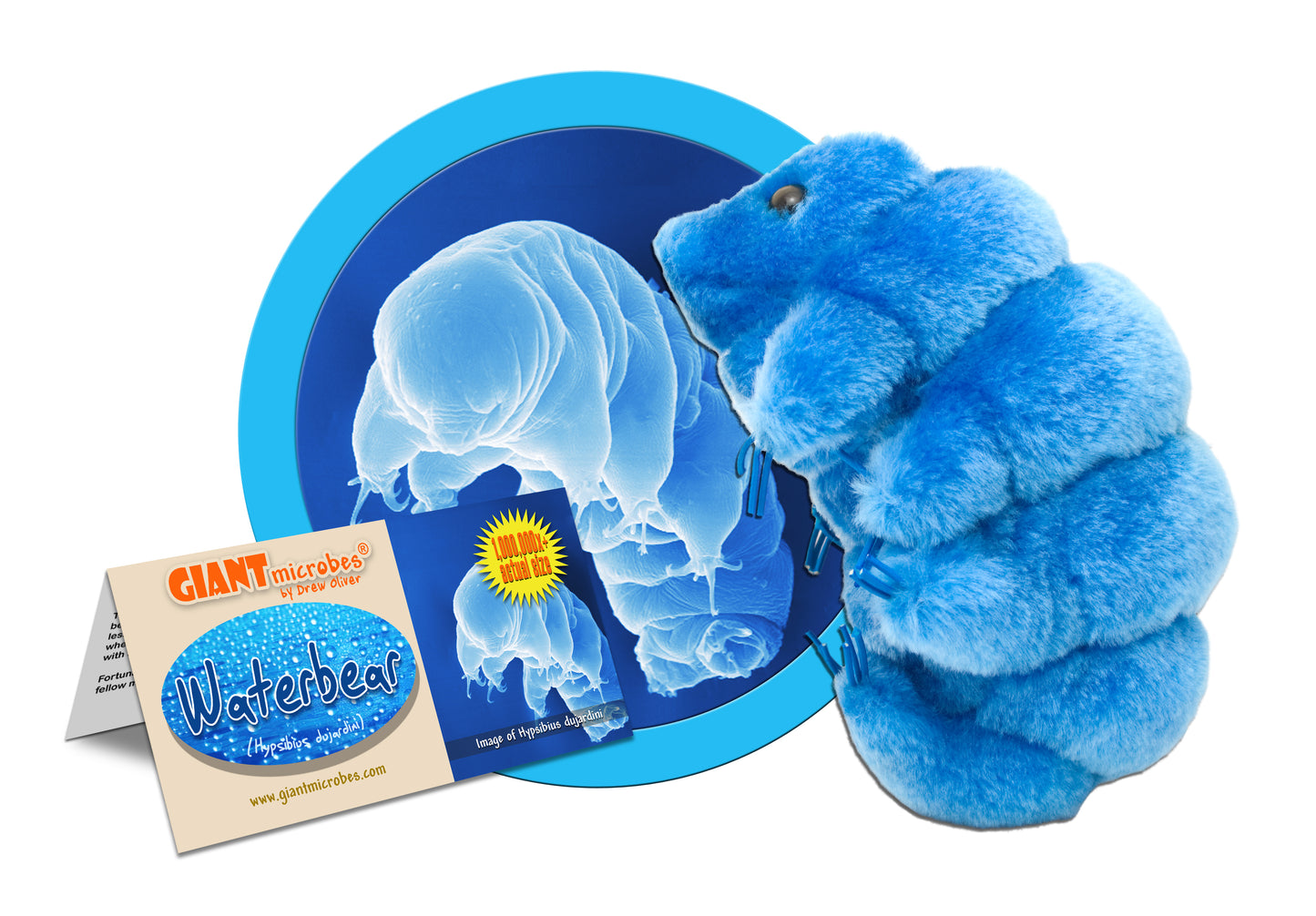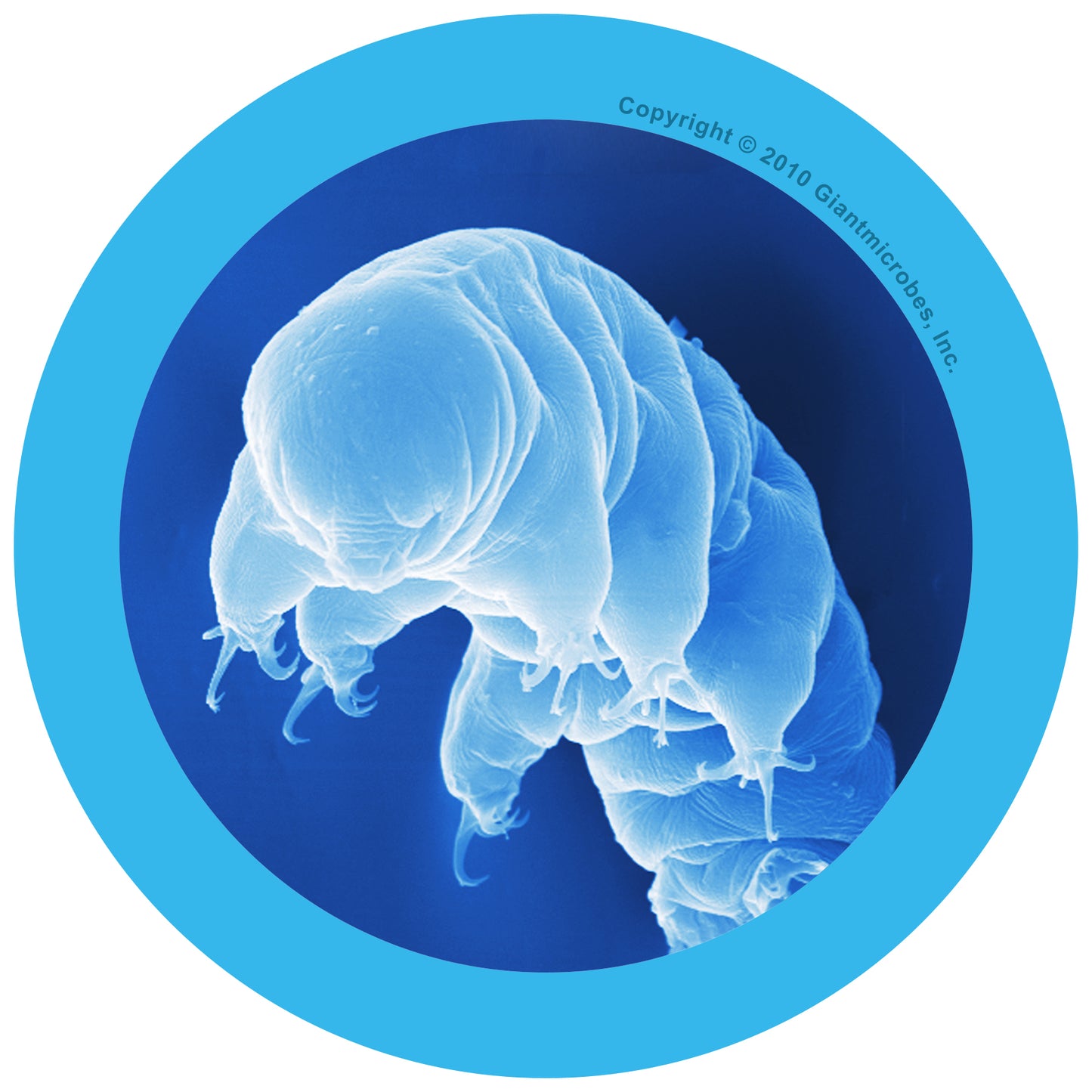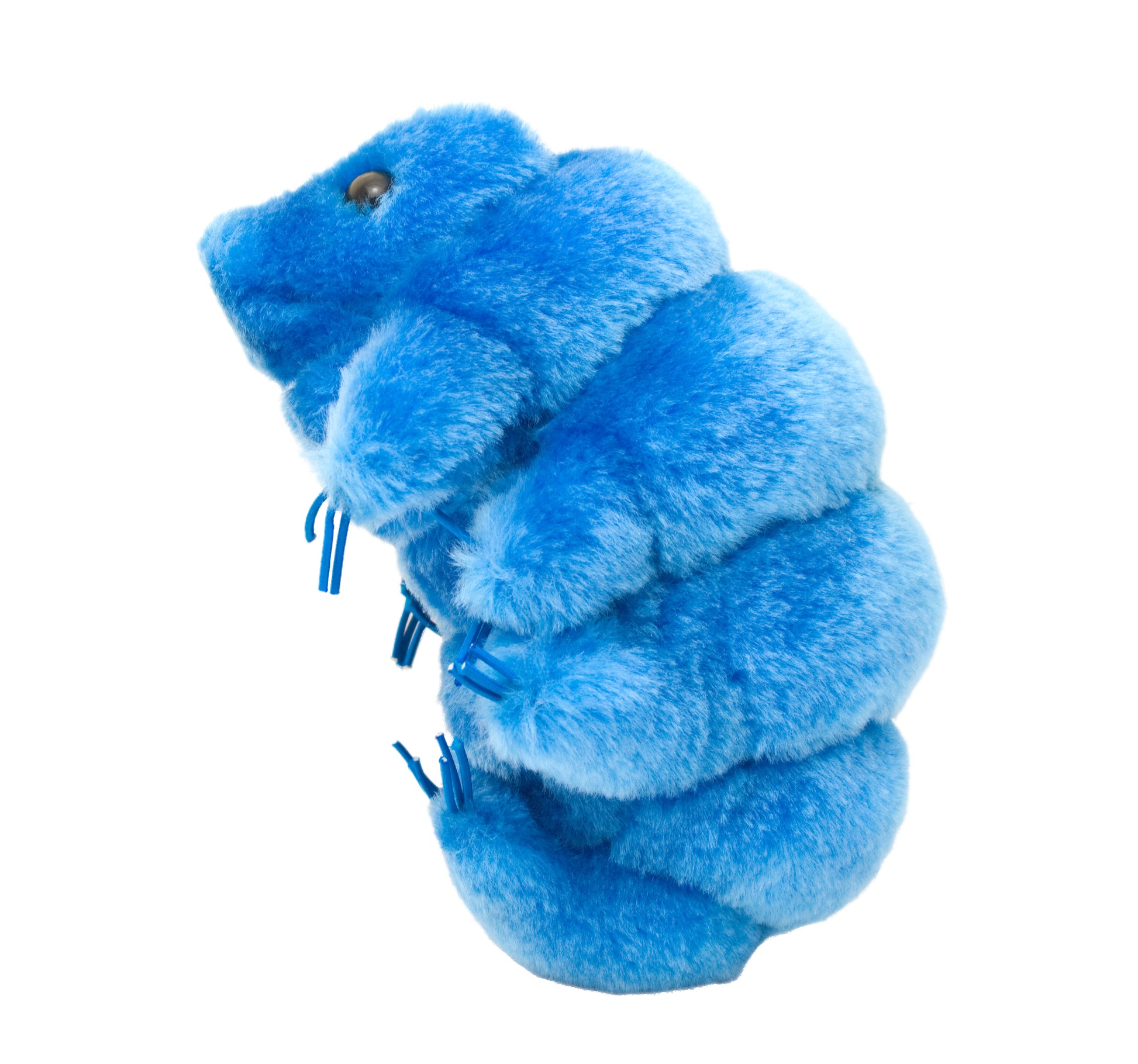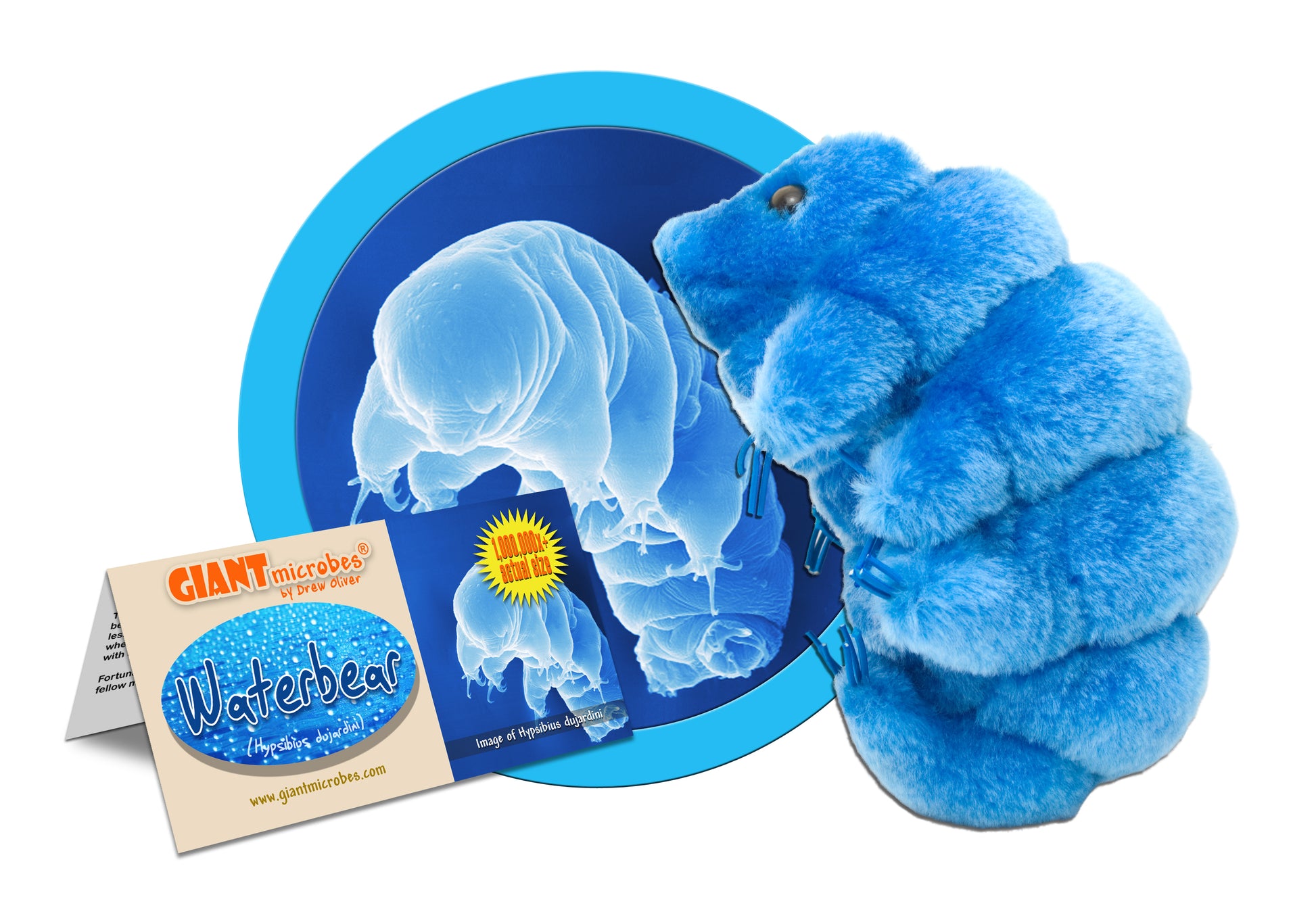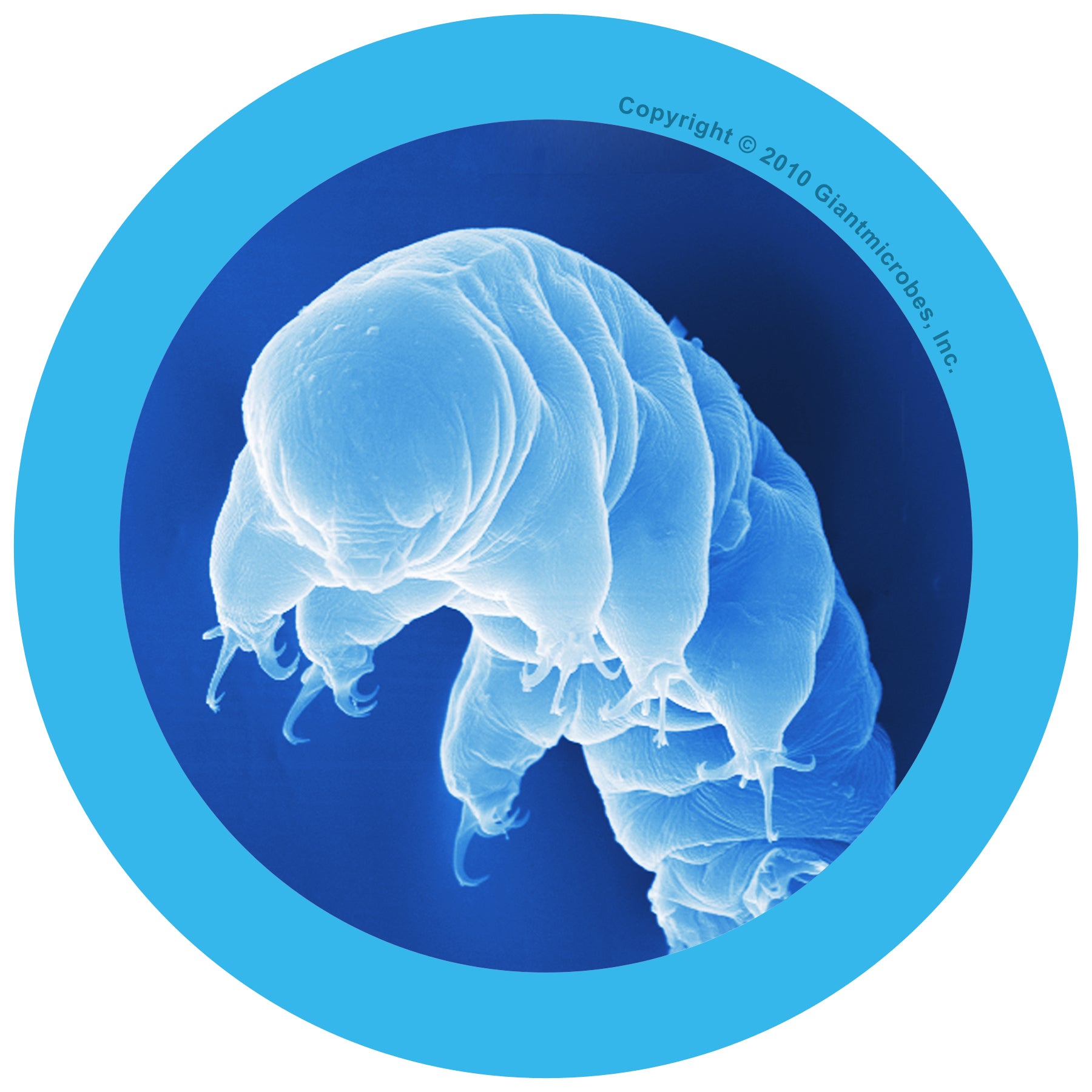Water Bear (Hypsibius Dujardini)
Water Bear (Hypsibius Dujardini)
Couldn't load pickup availability
- Giant Microbes® take on the stuffed Teddy Bear makes an adorable companion
- Wonderful addition to any plush doll collection
All About Waterbear (Hypsibius Dujardini)
FACTS: One of the more fascinating organisms in the microsphere is the common tardigrade – technically speaking, “slow walker.” However, it is not the tardigrade’s sluggish speed that captures the attention, but rather the fact that as this miniscule creature lumbers along on its eight tiny legs, it bears an uncanny resemblance to, well, a bear.
First described in 1773 by Johann August Ephraim Goeze as “kleiner Wasserbär,” these “little Waterbears” are unusually hardy. By entering a state of cryptobiosis – a kind of super-hibernation where the metabolism becomes inactive – waterbears can survive in boiling water, and at temperatures very close to absolute zero. They can dry out and survive 99% dehydrated for decades. They can survive a thousand times more radiation than humans can. They can even survive in the vacuum of outer space!
Needless to say, with these death-defying abilities, waterbears are found all over the world, from the highest mountain peaks to the depths of the deep. But they are typically found nearby in the miniature rainforests created by common mosses (indeed, they are sometimes called “moss piglets”) – so backyard adventurers with low-powered microscopes can easily go on a waterbear hunt.
But never fear: although a few species (such as the grizzly Milnesium tardigradum) are aggressively carnivorous, as a whole, waterbears (including our own Hypsibius dujardini) are quiet herbivores who live gentle little lives, picnicking and playing – and taking long, slow walks.
| DESCRIPTION | Tardigrades can morph in extreme conditions to survive without water. In dry conditions, they replace the water in their bodies with a sugar called trehalose. |
|---|
| NAME | The scientific name, Tardigrade, comes from Latin roots to describe its slow movement. They’re known as water bears because they prefers wet conditions and looks like tiny, microscopic bears. |
|---|
| ACTUAL SIZE | They range from 0.5 to 1.5 millimeter long, which is about 6 thousand times smaller than a brown bear! |
|---|
| WHERE IT LIVES | Tardigrades, or water bears, are tiny creatures that you can easily find frolicking in Central Park, but they can live just about anywhere from deep ocean trenches to Himalayan mountaintops. They can survive extreme conditions from hot temperatures of hot springs to Antarctic ice! They’ve have been around for over 500 million years! |
|---|
| HISTORY | They were discovered in 1773 by a German pastor named Johann Goeze. Their superpowers were recognized only three years later by an Italian scientist named Lazzaro Spallanzani. |
|---|
| FASCINATING FACTS | In 2007, Swedish researchers tested the tardigrades’ resilience by launching them into space. Most survived the exposure to cosmic rays and space conditions. Some even survived deadly levels of UV radiation! All this time, we thought only Superman could do that! |
|---|
